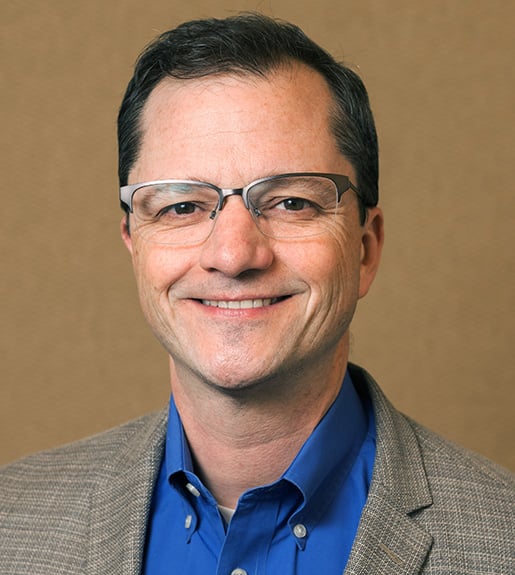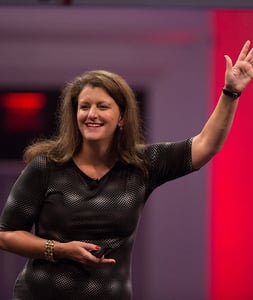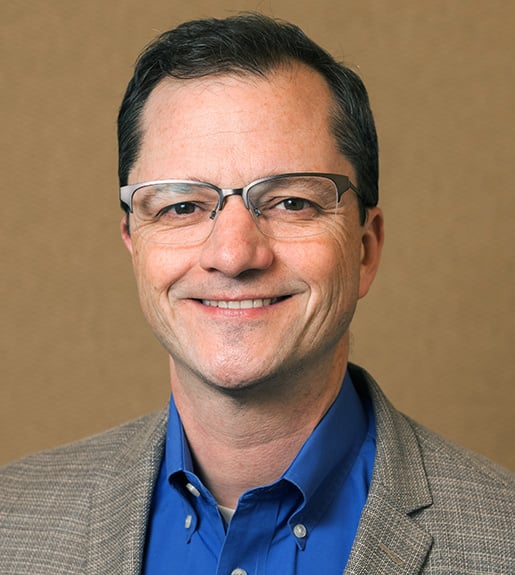Arts and Culture
Business Strategy
Fundraising
Article
The Culturephiles
401f55f8-09da-421e-a139-daf0df36e023
4 min
https://edge.sitecorecloud.io/tessiturane75c3-tessituraneee12-development-6640/media/Images/Discover-Images/Andrew-Blog/Archive/list-laptop-table-unsplash-768x465.jpg?h=465&iar=0&w=768
“Who don’t we know?”
The most important question fundraising teams should ask

President & CEO, Tessitura
The most important question fundraising teams should ask
11/20/2019
4 min
Fundraising 101 tells us that acquiring new donors is the lifeblood of a healthy philanthropy effort.
Everyone has the story of the multi-million donor who started out, years earlier, with a very modest gift. The first graphic you will see in Fundraising 101 is “The Donor Pyramid.” The bigger the base of small donations, the higher the revenue pyramid will climb. Fundraising 101 is 100% truth.

Fundraising 101: The Donor Pyramid
Fundraising 201 will tell you that donors seldom leap from $50 to $5,000,000 in one step. That’s why it is called “The Donor Pyramid” and not “The Donor Inverted T.”
The reality is, to move a donor from $50 to $5,000 to $5,000,000 requires years of personal attention to gradually increase their engagement. The professionals call it “donor cultivation” or “major gift stewardship,” but really it is a much simpler phrase: personal relationships. To succeed at Fundraising 201 you must build personal relationships. It is the rare donor who gives a major gift exclusively because of their love for the mission. It is far more common for the major gift to come in because they love the mission and they’ve got a personal relationship with the institution. And most of those personal relationships are with the tireless fundraisers of the world.
“People give to people” might be the quote at the top of the Fundraising 201 syllabus.
I say all of this from experience. As detailed in this post, I was a fundraiser myself for about a decade before deciding that I liked computers more than people. (Kidding! Mostly!) But the rest of this post is not my story. It is the story of a far savvier fundraiser than I ever was: Erin Koppel.

Erin was a fundraiser at the Lyric Opera of Chicago for two decades, and in that time worked in and managed nearly every aspect of their funding efforts. During her tenure, the Lyric was in the black 25 years out of 26 and when she completed her time there, she was the Deputy Director of Development responsible for raising more than $20M annually.
Erin has many wonderful stories of her time at the Lyric, but of them all, my favorite is one that she calls “Who don’t we know?”
Who Don’t We Know?
Let us return to Fundraising 201. Erin was well aware that personal relationships are the key to moving people up that donor pyramid. And in the performing arts, you have a wonderful built-in relationship building opportunity called “pre-performance events.” At the Lyric, they would have dinners, cocktail receptions, or at very least the donor’s lounge open before every single opera. From a building personal relationships perspective, it was like shooting fish in a barrel.
One night at one of these events, Erin stepped back and took in the room. She knew about half of the donors there. She saw her colleagues were engaging with about half of the donors. Interestingly, the team was engaging with all the people she also knew. So she kept looking. Who was talking to all the people she didn’t know? Well, nobody was. The relationship building was happening with the people they already had relationships with. Erin was seeing an “Inverted T” happening.
The next day, she printed out an alphabetical list of every donor in the midrange of their annual giving levels. She put her initials next to every donor she knew well enough to recognize on sight, outside the opera house. Then at a meeting, she passed the pages around to her fundraising colleagues, and invited them to initial the donors they knew.
When they were done thirty minutes later, they were all shocked and a little appalled at what they saw. About two thirds of the list had at least some initials next to them. And about a third of the list had no initials at all. Thus began the project Erin dubbed “Who Don’t We Know?”
From Inverted T to Pyramid
From this sobering exercise, Erin and team added all those initials into data points in Tessitura to ensure they now had a scalable way to record the all-important “who don’t we know?” donors. These were people who cared enough about the Lyric to give at least a midrange gift and yet were literally unknown to the fundraising staff.
The next step was simple. They had identified their “unknowns” and they knew when the “unknown” donors were attending the opera, so it was as easy as pulling a report out of Tessitura. They developed cultivation plans and, before each performance, the team would review the night’s attendance list, already filtered to only show the “unknowns”, and then divide and conquer. As the months passed, the list of unknowns got smaller. The Inverted T was starting to look more like a Pyramid — the personal relationships were building. Several donors, because of this engagement, made additional program support gifts in validation that the strategy was working.
And then they hit a plateau.
The last mile is the hardest
As successful as “Project Who Don’t We Know” had been, Erin was puzzled by the fact that there was an intractable 15% of their “unknowns” that remained unknown. She dived into the data. They represented a healthy number of folks who did attend the opera but didn’t attend the events.
She put herself in their shoes. “Why would I attend the opera all the time, support it generously, but never attend the donor events?” She thought about the people she would see in the more expensive seats but didn’t recognize. They tended to arrive early to scour the program notes. She would observe them attending the pre-performance talks rather than champagne receptions. These are a different segment, she realized: people who attended solely for the artistic product rather than the social aspect.
So on a lark, the team put together an afternoon lecture and Q&A with the dramaturg of the Lyric Opera and invited all the remaining “unknowns.” BINGO. They had found many of the rest of their unknowns and these particularly intellectual donors were absolutely thrilled and engaged. It has since become a long-standing and important part of the donor engagement offering. Over time, some of the more esoteric operas, traditionally a challenge to find sponsorship for, had production sponsors step forward from this group; they loved that Lyric would present these contemporary masterpieces.
* * *
I love this story. I love it because it is clever and in retrospect as obvious as the nose on your face. It isn’t some multi-pronged, hugely expensive bit of 'strategery.' It is immediately actionable. If you are a fundraiser, you could try this today! Print out your high-level donor list and figure out everyone you don’t know. Focus on those folks at your next events. Whittle down the unknowns and build your Inverted T into a pyramid. Be like Erin.
Erin Koppel is the Vice President, Enterprise Consulting, the strategy and management consulting group exclusively for Tessitura Network member organizations. With decades of experience as successful arts and culture practitioners, Erin and her team help Tessitura organizations achieve their revenue and engagement goals across fundraising, membership, marketing and ticketing. Erin is featured in an upcoming Tessitura webinar on Dec. 11 and 12, "Recommended Practices for Plans, Portfolios and Workers":
You can also watch a recording of Erin's most recent webinar, "Revisit Your Tessitura Basics: Recommended Practices for Campaigns, Funds, and Designations."
Topics
Arts & Culture
/Business Strategy
/Fundraising

How to be a good ancestor | Andrew Recinos
Arts & Culture
How a conversation with a genealogist changed how I talk with my family

Superpowers of Observation | Andrew Recinos
Arts & Culture / Museums
How a clever museum exec looked up from the numbers and saw the story of the solution.
